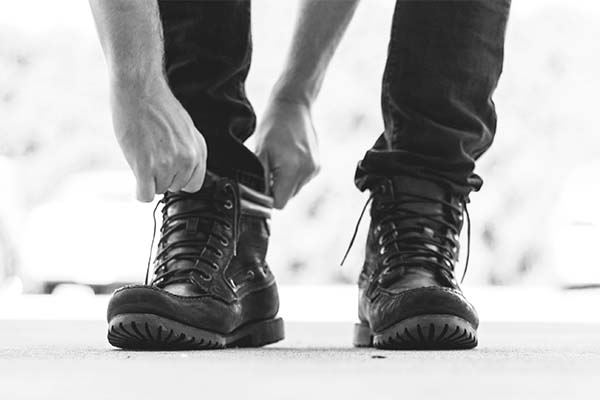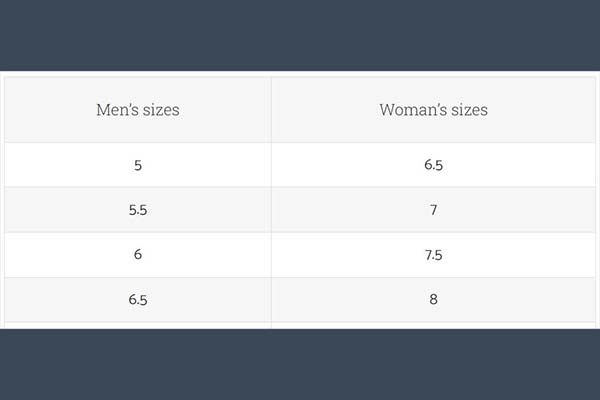Guide for buying hiking boots & shoes
What are the important considerations when buying hiking boots?
There are many factors to consider when deciding what hiking boots/shoes to invest in. The terrain, whether you’re going on shorter or longer hikes, the climate… the list is endless!
But there are a few key things that are essential to keep in mind when choosing what footwear you’re wearing on your next hike.
This article includes affiliate links
Do I really need hiking boots?
You may not need hiking boots, but you definitely need to invest in either hiking boots or shoes. Remember, every pair of feet is different and so is every hiking trail. The heave boots that worked for your friend’s mountain hike might not be the right choice for your 2 week midsummer hike in Spain.
Stay on this article to learn more about what hiking footwear you should choose.
What are the three types of hiking boots?
Trail shoes
These are good for hiking in dry climates. Good for day hikes, the shoes work best on less rocky paths.
Trail hikers
– the trail shoes’ older sibling. These lightweight boots are good on steeper paths or when the hiking trail gets muddy or a bit more rugged. The provide more stability than trail shoes and offer better ankle protection. Trail hikers are usually more high-cut than trail shoes and are also watertight.
Mountain walking or hiking boots
These are made for aspiring or experienced mountain walkers and are good for backpacking, mountaineering or hilly walks. For longer hikes or hikes through snowy or rocky environments, this is the ideal type of hiking boot. You can usually attach crampons for a better grip.
The strong, durable boots provide great support for serious adventurous hikers who need stiff soles, good insulation and great protection whether you’re tackling a mountain, a rocky trail or a backpacking trip on foot.
How should hiking boots fit?
Your hiking boots are supposed to provide great support, so they should fit snugly (but not tightly) around the heel and ankle, while giving enough room for your toes and a warm hiking sock. If you wear insoles, it’s best to try those on with the hiking boots, to make sure they fit just right.
A good fit is absolute quintessential when buying hiking shoes/boots. While this might seem obvious, you’ve probably heard horror stories of people returning from hikes with blisters and sprained ankles. The best fit should be snug around the heel for support and leave some room for your toes, as to avoid blisters and blackened toenails.
Remember, your feet take on the hardest work on hikes, so this is the most important factor to consider when choosing hiking boots or shoes.
You can use Sizerunner to compare different brands sizes – and don’t forget to leave space for your hiking socks!
How do I know what size hiking boot to buy?
There are many factors to consider when shopping for hiking boots and size may be the most important of them all. Luckily there are tons of sources you can use to help you find the exact size you need. With Sizerunner you can compare the sizes of different brands.
So, if you already have a pair of Salomon hiking boots, you can compare their sizes to Merrell or Keen hiking boots.
Do you want to size up in hiking boots?
Some hikers argue that you should size up – a half to a full size. This depends on your feet, the model you’re trying and what type of hike you’re going on.
It’s important for those sweaty hiking toes to have some wiggle room. You’ll also want enough room to comfortably wear good hiking socks. With that said, it all depends on the boots. Some brands carry bigger sizes in hiking boots, while others run smaller.
Remember that your hiking boots should always fit snugly, not tightly and have wiggle room for your toes.
How to tie hiking boots
There are a couple of ways you can choose from when tying your hiking boots and you can always switch it up to see what works best for you. How you tie your hiking boots is extremely important. It can help prevent heel slip and blisters and make sure your ankles are supported on difficult hikes.
In this guide we’ll go over the most popular method, where you use surgeon’s knots to keep your feet in place and avoid heel slip, which can create blisters and be hard on your ankles. Some of the other variations include ‘Window lacing’ and ‘Toe relief lacing’.
Guide to tying your hiking boots with a Surgeon’s knot:
1. Pull the shoelaces enough to make sure that the hiking boots fit snugly over your foot.
2. On the top of you foot there’s a point where your foot begins to flex forward – take the pairs of lace that are closest to this point and tie a surgeon’s knot at each pair
3. Now you take the laces, wrap them around each other twice and pull them tight. Put the lace through the next hooks, so as to secure the knot.
4. That’s it! Repeat step 3 at the highest hooks and tie the rest of your hiking boots in whatever way you prefer.
How to break in hiking boots
If you’re interested in hiking you’ve probably heard the horror stories about people getting blisters, soars and worse on their hikes. There are many reasons why this might happen, but one of the big sinners is not breaking in your hiking boots.
First of all, the amount of breaking in you’ll need depends on the type of hiking boot and the trail you’re hitting. Trail shoes and trail hikers require considerably less breaking in than the traditional leather hiking boots or mountain walking boots. Depending on the type of boot, it can take between one and four weeks to break in your hiking boots. So don’t buy them at the last minute!
Start by wearing your new hiking boots at home. Try them on with the hiking socks you’ll be wearing (and insoles, if you wear that), to get used to the feeling of the hiking boots. Try going on short walks around your town and up the distance for each trip. Make sure to be vigilant about any pains that might occur – if your toes get blisters, your heels are slipping or your ankles hurt, change something. You might have to tie your hiking boots differently or make sure the size is right for you.
Now it’s time for the real breaking in of your new hiking boots! When you’re ready, put your backpack on and hit the trail! Try them out for a day or even just a half day. That way you’re more prepared for the big hike you’ve been looking forward to.
Best materials for hiking boots
There are many materials to choose from when buying hiking boots. The traditional leather boots might be the most well known but with constant technological developments from a range of brands, it’s important to know your options. Here’s a list of the most typical materials, so you can do your research on what material to choose.
Full-grain leather
If you choose a full-grain leather hiking boot, you have a hiking companion for life. This material is extremely durable and resistant to almost all types of weather. On the downside, full-grain leather is not as breathable as some of the other options and full-grain leather hiking boots take a while to break in. If you’re going on long backpacking hikes on rugged terrain, you should look into a full-grain leather hiking boot.
Split-grain leather
A bit less resistant than full-grain leather, this sturdy material is usually paired with other lighter and more breathable materials such as nylon. Of course this makes the boots less water resistant than full-grain leather, but on the plus side they might be more comfortable in warmer climates as they offer better breathability.
Nubuck
Very close in resemblance to full-grain leather, this material is made to look like suede. It also takes at least a couple of weeks to break in, but once done you have a sturdy and durable hiking boot.
Vegan leather
There are different types of vegan leather out there and most of them are made to resemble full-grain leather hiking boots – sturdy, durable and waterproof. This is a good option for vegans and others who don’t want to wear real leather.
Synthetics
Synthethics cover a range of materials, such as polyester, ‘fake’ leather, nylon etc. Mots of these materials are more lightweight, breathable and much quicker to break in than leather hiking boots. On the downside, they’re not as sturdy and won’t last for as long, due to more stitching. Synthethic hiking boots are often cheaper than their leather counterparts.
Waterproof membranes
Read more about waterproof membranes under Gore-tex hiking boots right below.
Gore-Tex hiking boots
Gore-Tex is a technology used to create waterproof membranes so that your feet stay dry no matter the weather on your hiking trip. With Gore-Tex hiking boots you can walk through puddles, wet grass, snow and even streams with completely dry feet as long as the waterproof membrane remains sealed. Of course this makes Gore-Tex hiking boots an attractive choice if you’re going on a hike in cold, wet climates. The downside is that your feet might get quite sweaty, since there isn’t really any breathability. So if you’re hiking in summer or warmer climates you may want to reconsider wearing Gore-Tex hiking boots.
Most popular brands for hiking boots, men & women
Hiking has always been popular and therefore there are some brands that experience a lot of popularity among all genders and types of hikers. There are many great brands out there and these are some of the most popular among hikers.
1. Salomon
This brand has become increasingly popular over the past few years with younger generations taking in Salomon sneakers and hiking boots as veritable fashion items. But Salomon has actually been around since 1947 where they were mostly known among skiers. They have remained popular for a reason – their hiking shoes are comfortable, breathable, durable and – if you ask fashion forward young people – extremely cool. Find your Salomon shoe size here.
2. Merrell
Merrell is a brand that focuses on hiking shoes and boots and they’ve been extremely popular among hikers ever since the company was founded in 1981. With a big focus on sustainability, this brand creates hiking shoes and boots for men, women and kids of all ages and levels. Find your Merrell shoe size here.
3. Keen
This family-owned US brand is one of the world’s most popular brands and understandably so. Focused on values such as originality and sustainability, Keen create hiking boots for the conscious customer who wants a good durable hiking boot that they can wear on all their adventures. Find your Keen shoe size here.
Most popular hiking boots men + women
Salomon X Ultra 3 GTX
Find out more information about this model from Salomon here.









